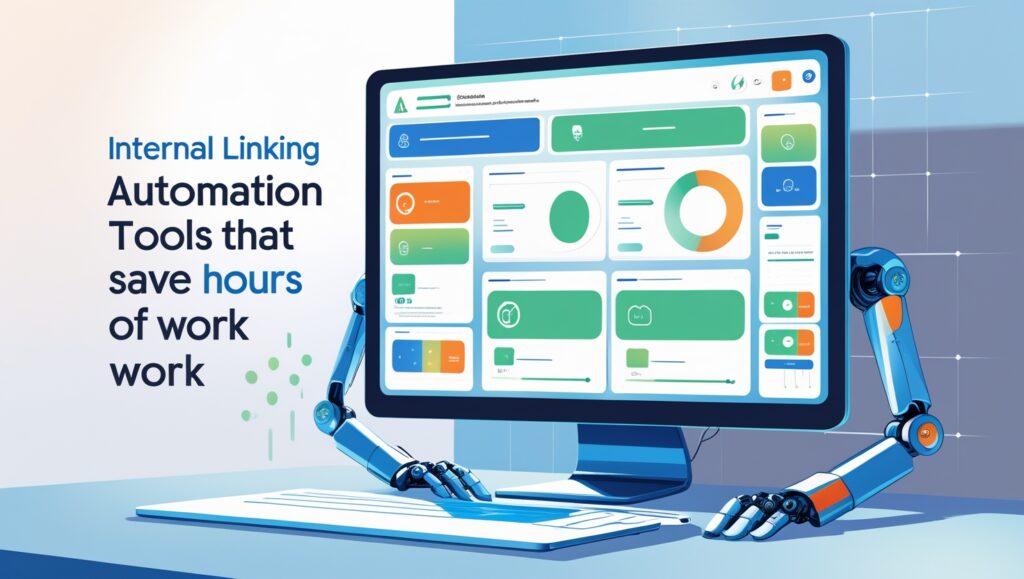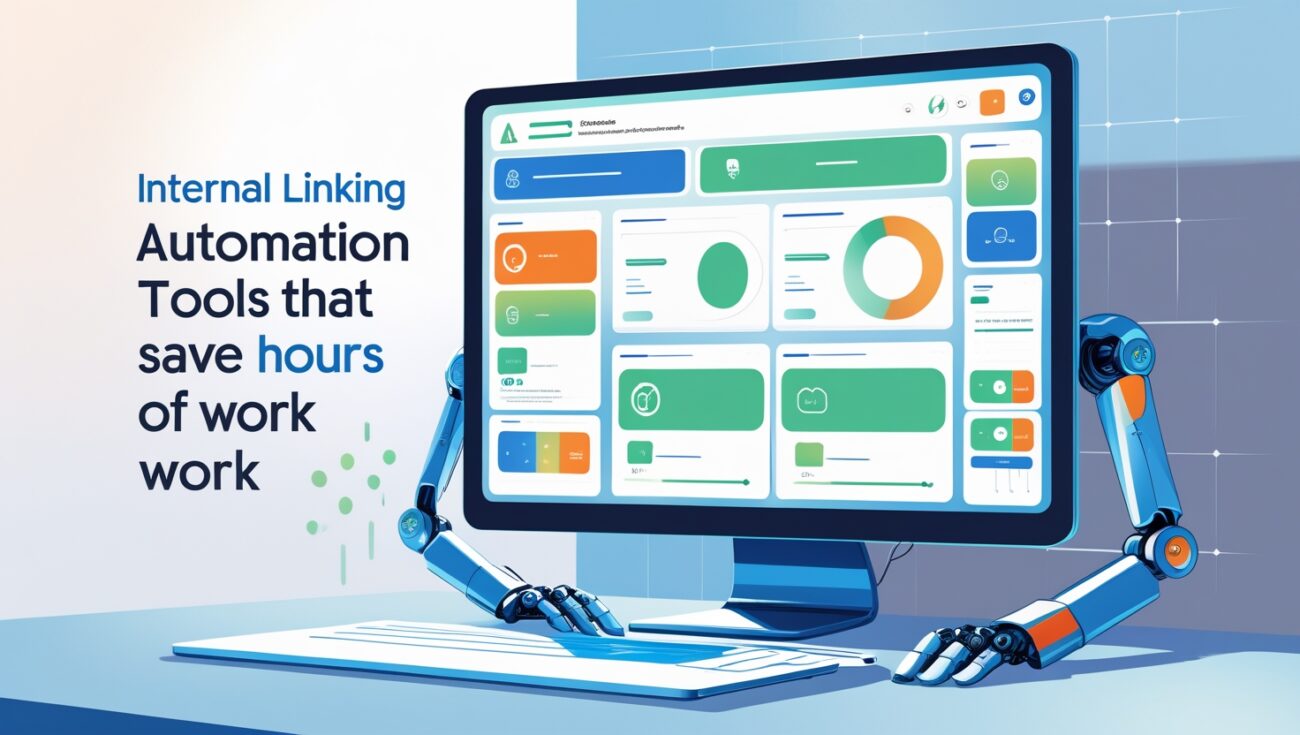Internal Linking Automation Tools That Save Hours of Work
I remember the early days of my website. I had a few hundred articles, and every time I published a new one, I would open up a spreadsheet and start manually auditing my site for internal linking opportunities. I’d spend hours looking for broken links, finding orphaned pages, and trying to figure out which old articles were relevant to my new content.

Table of Contents
It was a monumental waste of time. I quickly realized that manual internal linking was not only a chore but was also holding me back. I was missing opportunities, making mistakes, and spending countless hours on a task that I knew could be automated. I’ve since learned that internal linking automation is the key to building a powerful, high-ranking website without wasting hours of your life.
The Problem with Manual Internal Linking
Problem #1: It’s a Time Sink
Manually auditing your website for broken links and orphaned pages is a huge time sink. On a website with more than a few hundred pages, this process can take hours or even days. And by the time you’re done, the data is already out of date.
Problem #2: You’ll Miss Opportunities
It is nearly impossible for a human to find every single internal linking opportunity on a large website. You might find a few obvious ones, but you’ll almost certainly miss a dozen others that could have passed valuable link equity to your most important pages.
Problem #3: It’s Prone to Human Error
Manually adding links can lead to mistakes, like linking to the wrong page or using the same anchor text too many times, which can look unnatural to Google and harm your rankings over time.
How Automation Tools Solve the Problem
A good internal linking automation tool takes all of the guesswork and manual labor out of the process, and provides you with a clear, actionable list of fixes and opportunities.
Benefit #1: They Find All Your Linking Errors
A good tool automatically scans your site for broken links and orphaned pages, and presents you with a simple report of everything that needs to be fixed. It’s like having a full-time assistant who does all of the hard, manual work for you. A tool can find all of your internal linking errors in minutes so you can start fixing them immediately.
Benefit #2: They Suggest New Linking Opportunities
The best tools analyze your content and suggest relevant, contextual internal linking opportunities that a human would never find. This is where the magic happens. A tool can read your entire website and give you a list of every opportunity you’ve been missing. Ready to stop guessing and start getting the rankings you deserve? Discover how Linkbot can help you.
Benefit #3: They Help You Build a Strategic Structure
A good tool can help you visualize and manage your website structure, ensuring that authority flows to your most important pages. It can help you build a solid pillar & cluster structure and ensure that no page is more than a few clicks away from your homepage.
My #1 Internal Linking Automation Tool: Linkbot
I’ve tried dozens of tools, and nothing compares to Linkbot. It’s the one tool that took my internal linking from a messy chore to a simple, effective strategy. It automatically scans my entire site, provides a clear to-do list, and suggests every opportunity I’ve been missing.
Conclusion: Stop Wasting Hours. Start Getting Results.
In today’s fast-paced digital world, manual internal linking is a losing game. It’s a monumental waste of time that leads to missed opportunities and costly mistakes. Internal linking automation is the key to building a powerful, high-ranking website without wasting countless hours. Don’t wait. Start automating your internal linking strategy today.
My journey taught me that a major mistake is seeing SEO as a mystery. By implementing a smart, corrective approach to my website, I made the mental shift from being a spectator to an active participant in my website’s success. This simple realization took the overwhelm out of SEO and turned it into a series of logical, manageable steps that I could control.
The long-term, compounding effect of fixing these mistakes is what makes it so powerful. Each time you add a thoughtful, relevant link, you are not just performing a task; you are building your website’s authority, one link at a time. These small, consistent improvements add up to a significant competitive advantage over the long term, making your website an increasingly powerful asset.
I can say from personal experience that there is a special kind of satisfaction that comes from seeing a direct correlation between a new link and a ranking boost. It’s the feeling of taking a tangled mess and organizing it into a clean, logical network. The result is a website that just feels better to navigate, for both users and the people managing it.
A clean internal link profile also has a huge impact on your website’s overall trustworthiness and authority. When a user or a search engine bot lands on your page and sees a clear network of interconnected, relevant articles, it signals that you are a serious, comprehensive resource on the topic. This kind of professional organization is exactly what Google looks for.
The most important part of this foundational skill is building a consistent habit of linking. It’s not about a single audit and then forgetting about it. A good website is a living thing, and it needs regular maintenance to ensure your internal links stay clean, which is a key part of long-term SEO success.
I felt like I was finally in the driver’s seat of my SEO. For years, I had relied on external factors, which felt like I was giving up control of my SEO destiny. But by mastering a simple task like building my internal links, I was proactively building my site’s authority from the inside out, on my own terms, which was an empowering and exciting feeling.
By implementing a strategy that serves both SEO and conversions, you are also directly addressing Google’s E-E-A-T framework. You are demonstrating expertise by creating topical clusters, you are showing authority by linking from strong pages, and you are providing a better user experience, which is a key part of what Google looks for in a trustworthy website.
I’ll never forget the first time I applied my new internal link strategy to a page that was struggling to rank, and it shot up in the search results almost overnight. This was my “aha” moment. I realized that a strategic, well-placed link from a high-authority page was far more powerful than I ever thought possible.
One of the greatest benefits I got from using an automated tool to manage my link profile was the “to-do” list it provided. Instead of being overwhelmed by the sheer size of my website, the tool gave me a prioritized, actionable list of fixes to make. It transformed a monumental, frustrating task into a series of manageable steps that I could tackle in just minutes.
It’s crucial to understand the difference between a simple, generic link and one that’s part of a strategic, mapped plan. A simple link is a one-off connection. A link that’s part of a plan is a purposeful part of a larger network, designed to pass authority and guide a user. The latter is far more powerful.
Ultimately, mastering internal linking is a simple but powerful strategy that transforms a website’s foundation. It’s a low-cost, high-impact fix that can instantly improve your site’s health and SEO performance. It’s the kind of foundational SEO work that every website owner should prioritize.
My final piece of advice is to not be intimidated. Don’t worry about the high cost of manual labor; just focus on making your website a better place for your readers. You will be amazed at the progress you make and the results you can achieve.

